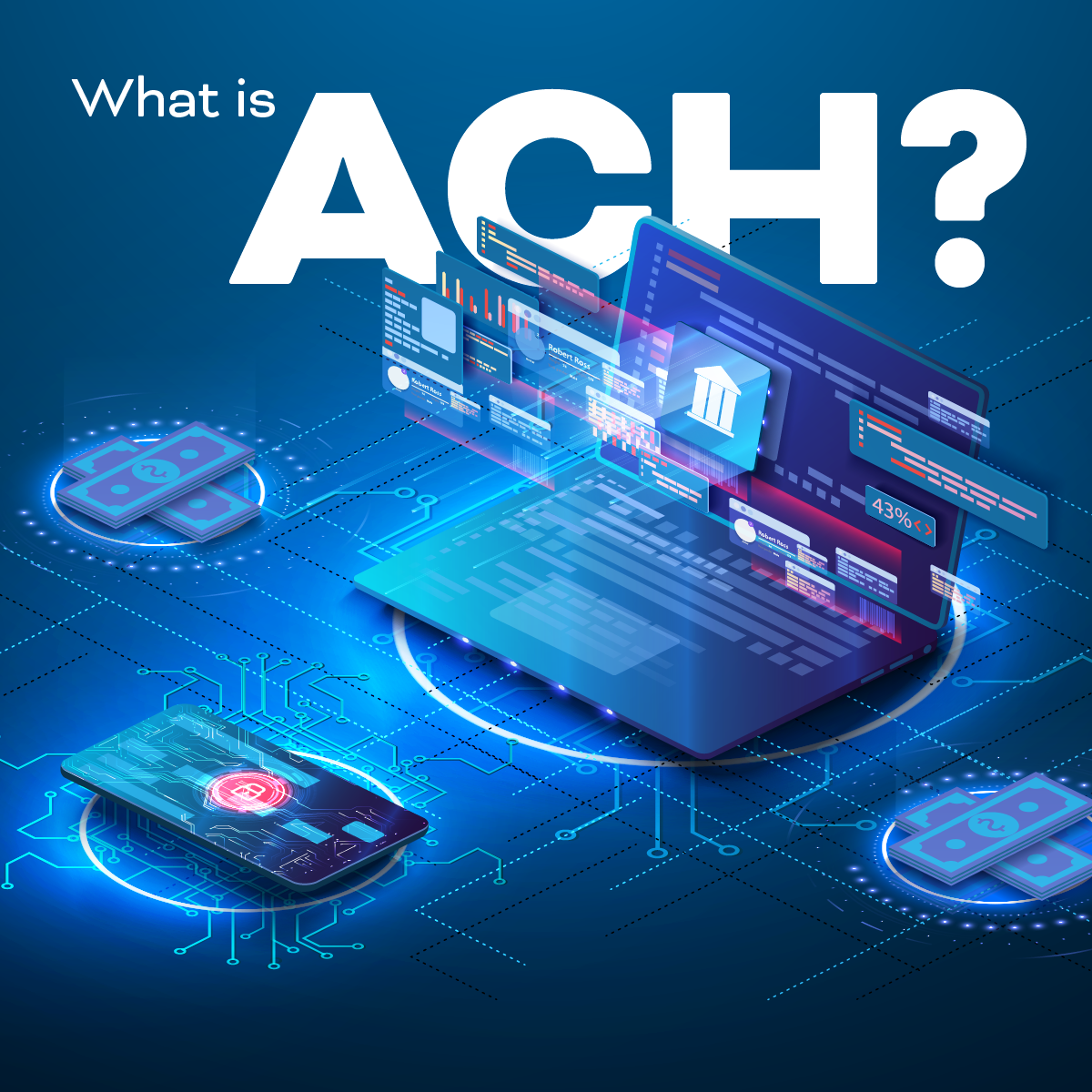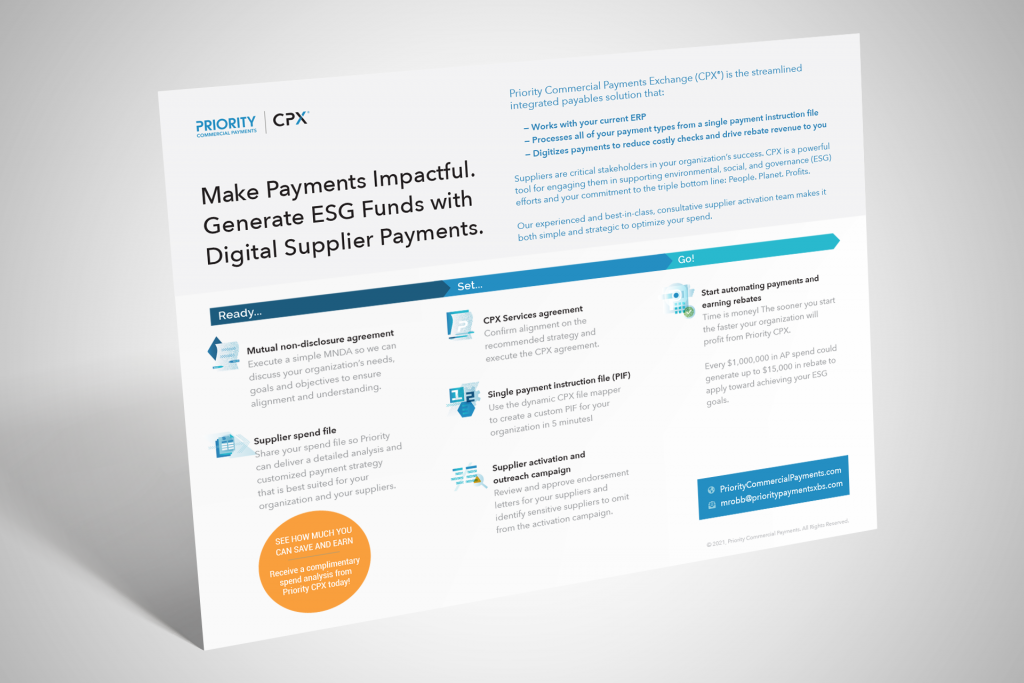
What is ACH and How Does it Work?

ACH, or Automated Clearing House, is a payment system used by banks to transfer money between accounts electronically. ACH is a widely used payment method in the United States, popular due to its convenience and speed.
In this blog post, we’ll discuss the various aspects of ACH, including how it works, its meaning, transaction types, payment methods, and differences from other payment systems like wire transfers and EFTs. Here’s a list of common terms and methodologies, and what they mean in layman’s terms.
How do ACH Payments Work?
Step #1: Authorization
The person or business initiating the transfer (known as the originator) obtains the necessary authorization from the recipient to begin the transaction. Authorizations are obtained through various means such as a signed authorization form or online authorization.
Step #2: Initiation
The originator initiates the transaction by submitting an electronic file to their bank with information about the transaction, including the recipient’s bank account and the amount to be transferred.
Step #3: Routing
The originator’s bank forwards the transaction to the operator, which is responsible for routing the transaction to the recipient’s bank.
Step #4: Processing
The recipient’s bank receives the transaction and processes it, which involves verifying the account information, ensuring sufficient funds are available, and executing the transfer.
Step #5: Settlement
The operator settles the transaction by transferring the funds from the originator’s bank account to the recipient’s bank account. This process typically takes 1-2 business days to complete.
Step #6: Notification
Finally, the originator and recipient are notified of the transaction through account statements or online banking platforms with their respective banks.
How Long Does it Take to Process ACH Payments?
Processing ACH payments typically takes one to two business days. The exact timing can vary based on when the payment is initiated and the banks that are involved. Some payments may clear faster, especially with Same-Day ACH, while others may take longer if they are processed during weekends or holidays.
Can All Banks Process ACH Transactions?
Not all banks can process ACH transactions. Most major banks and credit unions offer ACH services as a standard feature, but smaller banks or certain specialized institutions might not support ACH transactions, or may have limitations on the types of ACH services they provide.
Types of ACH Transactions
There are two types of ACH transactions: direct deposits and direct payments. Let’s go over the key differences below.
Direct Deposit
This is typically when you receive money, such as payroll from your job, government benefits, and tax refunds. It’s a convenient way for businesses or government entities to send money directly to consumers without the hassle of paper checks.
Direct Payment
This is typically when you’re on the paying end. With direct payments, money moves electronically from one bank account to another, whether it’s for bills, online shopping, or simply sending cash to a friend. If you’re paying for something, you’re likely using a direct payment method.
Common ACH Definitions
The payments industry can be overwhelming with its use of initialisms and acronyms to abbreviate the methods, institutions and mechanisms that make it all work. Here we’ll quickly detail the terms typically associated with ACH to shed light on how this complex industry functions.
ACH Credit
Commonly used for direct deposits and government payments, such as tax refunds and social security benefits.
ACH Debit
Commonly used for automatic bill payments and other recurring payments.
ACH Deposit
Commonly used for direct deposits of payroll, social security benefits, and tax refunds.
ACH Payment
A payment type processed specifically through the Automated Clearing House network. Commonly used for direct deposits, bill payments, payroll, and other recurring payments.
ACH Bank Transfer
An electronic transfer of funds between two bank accounts. A bank transfer is processed through the Automated Clearing House network and is commonly used for recurring payments, such as direct deposits, bill payments, and payroll.
ACH Number
ACH number, also known as a routing number or ABA number, is a unique identifier assigned to a bank or financial institution. This number identifies the bank or institution when processing transactions.
Same-Day ACH
Same-Day ACH is a service that allows transactions to be processed and settled on the same day. Before Same-Day was available, transactions typically took 1-2 business days to process and settle. Used for a variety of purposes, such as expedited payroll processing, emergency payments, and faster bill payments. Also used for consumer payments, such as expedited payments for online purchases or donations.
Return Item
A transaction returned because of an issue such as insufficient funds or an invalid account number.
Understanding ACH: The Role of Tier 1 Processors and Fed Terminals
Tier 1 Processor
A high-volume payment processing company that provides direct access to the ACH network. These companies are typically large, well-established financial institutions or tech companies. They have the resources and infrastructure to process millions of transactions per day. They provide a range of processing services, including transaction routing, settlement, and reporting, as well as payment fraud prevention and risk management tools.
Fed Terminal
A type of electronic payment terminal that allows merchants to process ACH payments directly from a customer’s bank account. Businesses that have recurring payments or payments with high transaction values – such as utility companies, insurance providers, and government agencies – use fed terminals.
Common Financial Institution Abbreviations
ACH
Automated Clearing House – A “clearing house” is a financial institution. It acts as an intermediary between buyers and sellers of financial instruments, such as money, stocks, bonds, futures, and options. The main function of a clearing house is to reduce risk and facilitate smooth transactions in financial markets.
NACHA
NACHA stands for National Automated Clearing House Association. It is a non-profit organization that oversees the ACH Network in the United States. NACHA develops and enforces the rules and guidelines for the network. It also provides education and support to its members who process payments via the network, which includes financial institutions, businesses, and government agencies.
AAP
The Automated Accounting Participant is a financial institution authorized to perform automated accounting functions. It has met certain requirements to participate in the ACH network.
ODFI
An Originating Depository Financial Institution is the financial institution that initiates a transaction on behalf of an originator.
RDFI
A Receiving Depository Financial Institution is the financial institution that receives a transaction on behalf of a receiver.
ACH vs. Other Digital Payment Methods
A multitude of digital payment methods are available for B2B and B2C transactions, and they often overlap with ACH. Digital payment methods most commonly confused with ACH and how they primarily differ are listed below.
ACH vs. EFT
ACH is a specific type of EFT that is used in the United States for batch processing of financial transactions. EFT is a broader term that encompasses various electronic payment methods.
ACH vs. Direct Debit
Direct debit allows businesses to automatically withdraw funds from a customer’s bank account to pay for products or services. The way payments are initiated is a key difference between these two transaction methods. The recipient initiates the payment with ACH, while the payer initiates the payment with Direct Debit.
ACH vs. Wire Transfers
Wire transfers are electronic transfers of funds from one bank account to another. Wire transfers, usually processed in real-time, are a faster payment method (unless you’re using Same-Day ACH). However, they are more expensive and often require more information from the sender.
ACH vs. Electronic Check Conversion
This payment method allows merchants to convert paper checks into electronic transactions. The customer provides the merchant with a check, and the merchant processes the payment electronically.
ACH vs. Online Bill Payment
This method allows customers to pay bills online through a bank’s website or a third-party payment processor. Online bill payment is similar to ACH in that it allows customers to make payments electronically, but it may not be as fast or secure as ACH.
Streamline your ACH Process with Priority
The world of ACH, money transfers and digital payments can be overwhelming. Priority employs a team of accredited experts to help you determine the right payment options for your specific needs.
Our ACH.COM platform powers payments seamlessly inside Priority CPX®, MX™ Merchant and dozens of leading financial business enterprise solutions. Our fully integrated platform is supported by experienced experts, including five AAPs (Automated Accounting Participants). From its stable UI and banking API connections to a full suite of detailed reporting and underwriting services, ACH.COM is ready to help you streamline payments.









